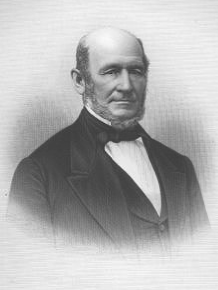Missionary Work: Who taught Who
Missionary Work: Who taught Who
Brigham Young
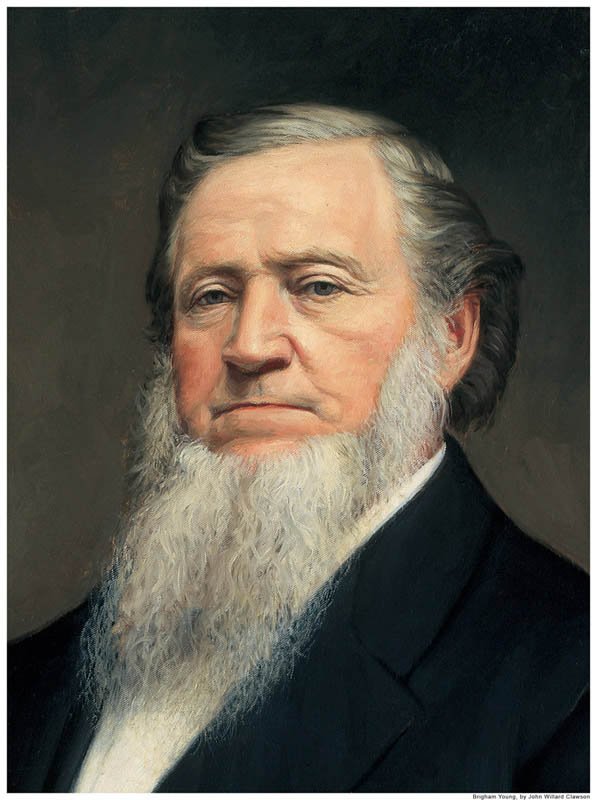 In 1830, Samuel Smith was called on a mission to preach the gospel in the state of New York. While in the town of Mendon, Smith contacted Phineas Young, a Methodist preacher and the seventh child of a very religious family. Smith told him of a “Golden Bible” that had been translated from ancient records by his brother Joseph Smith. Phineas Young carefully studied the book, who then showed it to his family, including his brothers Brigham, Joseph, and John. On April 5, 1832, Phineas Young was baptized along with his brother John. His brother Joseph was baptized the next day and Brigham approximately one week later. All became prominent leaders and were faithful throughout their lives.
In 1830, Samuel Smith was called on a mission to preach the gospel in the state of New York. While in the town of Mendon, Smith contacted Phineas Young, a Methodist preacher and the seventh child of a very religious family. Smith told him of a “Golden Bible” that had been translated from ancient records by his brother Joseph Smith. Phineas Young carefully studied the book, who then showed it to his family, including his brothers Brigham, Joseph, and John. On April 5, 1832, Phineas Young was baptized along with his brother John. His brother Joseph was baptized the next day and Brigham approximately one week later. All became prominent leaders and were faithful throughout their lives.
Samuel Smith’s encounter with Phineas Young is found in a September 2004 article in the Ensign titled The First Latter-Day Missionary. A brief excerpt of the account as follows:
In 1830 Samuel also sold a copy of the Book of Mormon to Brigham Young’s brother: Phinehas (or Phineas) Young, a Methodist preacher. When he first met Samuel, Phinehas was returning home on horseback from his preaching circuit. He had stopped at a farm for dinner. As he and the family were visiting, a young man, dressed in rough clothes, entered the room. Book in hand, the young man said to Phinehas, “There’s a book, sir, I wish you to read.”
“Pray, sir, what book have you?” Phinehas asked.
“The Book of Mormon, or, as it is called by some, the Golden Bible.”
“Ah, so then it purports to be a revelation?” Phinehas asked.
The young man opened the book to the testimonies of the Three and Eight Witnesses and said, “Here is the testimony of the witnesses to the truth of the book.”
Phinehas read their testimonies. When Phinehas looked up from his reading, the young man said, “If you will read this book with a prayerful heart and ask God to give you a witness, you will know the truth of the work.”
Phinehas promised to read the book. Then he asked the young man’s name.
“My name is Samuel H. Smith.”
Phinehas had seen that name! “Then you are one of the witnesses.”
“Yes,” Samuel said. “I know the book is a revelation from God, translated by the power of the Holy Ghost, and that my brother, Joseph Smith Jr., is a Prophet, Seer, and Revelator.”
After arriving home Phinehas told his wife, “I have got a book here called the Book of Mormon, and it is said to be a revelation, and I wish to read it and make myself acquainted with its errors, so I can expose them to the world.”
True to his promise, he read the Book of Mormon—twice in two weeks. Rather than finding any errors, he became convinced the book was true. On Sunday, when his congregation asked for his opinion of the book, “he defended it for ten minutes, when suddenly the Spirit of God came on him with such force that in a marvelous manner he spoke at great length on the importance of it. … He closed by telling the people that he believed the book.”
When Phineas introduced the message of Mormonism to his brother Brigham, Brigham was intrigued; but he investigated the Church for a full two years before being baptized on April 14, 1832. He later described his conversion:
“If all the talent, tact, wisdom, and refinement of the world had been sent to me with the Book of Mormon, and had declared, in the most exalted of earthly eloquence, the truth of it, undertaking to prove it by learning and worldly wisdom, they would have been to me like the smoke which arises only to vanish away. But when I saw a man without eloquence, or talents for public speaking, who could only say, ‘I know, by the power of the Holy Ghost, that the Book of Mormon is true, that Joseph Smith is a Prophet of the Lord,’ the Holy Ghost proceeding from that individual illuminated my understanding, and light, glory, and immortality were before me. I was encircled by them, filled with them, and I knew for myself that the testimony of the man was true…. My own judgment, natural endowments, and education bowed to this simple, but mighty testimony. There sits the man who baptized me, (brother Eleazer Miller.) It filled my system with light, and my soul with joy. The world, with all its wisdom and power, and with all the glory and gilded show of its kings or potentates, sinks into perfect insignificance, compared with the simple, unadorned testimony of the servant of God.”
Heber C. Kimball
In the latter part of the year 1831, Phineas Young held a meeting where he lived with the missionaries to discuss Mormonism in Victor, New York. Five miles away in Mendon, Heber C. Kimball, hearing of these men, was curious to go and see them (the Youngs and the Kimballs were good friends). There for the first time he heard the fullness of the everlasting gospel and was convinced of its truth. Here at this meeting one of the missionaries would bear his testimony. Brigham Young, was also in attendance and upon Elder Eleazar Miller bear his testimony,”If all the talent, tact, wisdom and refinement of the world had been sent to me with the Book of Mormon, and had declared, in the most exalted of earthly eloquence, the truth of it, undertaking to prove it by learning, and worldly wisdom, they would have been to me like the smoke which arises only to vanish away. But when I saw a man without eloquence, or talents for public speaking, who could only say, “I know, by the power of the Holy Ghost, that the Book of Mormon is true, that Joseph Smith is a prophet of the Lord,” the Holy Ghost proceeding from that individual illuminated my understanding, and light, glory, and immortality were before me. I was encircled by them, filled with them, and I knew for myself that the testimony of the man was true.” Desiring to hear more of the Saints, in January, 1832, Heber C. Kimball, Brigham Young, and Phineas Young, traveled 125 miles to Columbia, Pennslyvania where the Saints were gathered. There they stayed with the Church nearly a week. Vilate Kimball, wife of Heber, would later say that they, “saw the power of God manifested and heard the gift of tongues, and then returned rejoicing, bearing testimony to the people by the way.” Later that spring, on April 14, 1832, Brigham was baptized by Eleazar Miller. The following day, Heber was baptized.
Parley P. Pratt
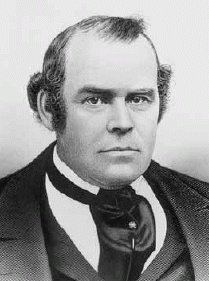 While traveling to visit family members in western New York, Parley P. Pratt read a copy of the Book of Mormon owned by a local Baptist deacon. Convinced of its authenticity, he traveled to Palmyra and spoke to Hyrum Smith at his home. Pratt was baptized on September 1, 1830 by Oliver Cowdery. He thus continued on to his journey to visit his family and introduced his younger brother Orson Pratt to the Book of Mormon. Orson Pratt was baptized on September 19, 1830.
While traveling to visit family members in western New York, Parley P. Pratt read a copy of the Book of Mormon owned by a local Baptist deacon. Convinced of its authenticity, he traveled to Palmyra and spoke to Hyrum Smith at his home. Pratt was baptized on September 1, 1830 by Oliver Cowdery. He thus continued on to his journey to visit his family and introduced his younger brother Orson Pratt to the Book of Mormon. Orson Pratt was baptized on September 19, 1830.
Sidney Rigdon
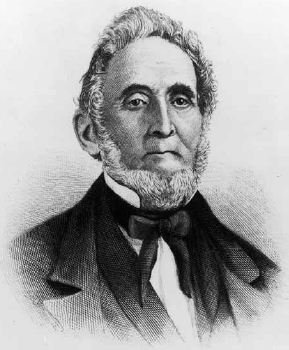 In October 1830, Parley P. Pratt met Joseph Smith and was asked to join a missionary group assigned to preach to the Lamanites on the Missouri frountier. During the trip west, he and his companions stopped to visit Sidney Rigdon in Ohio, not far from Kirtland. Sidney Rigdon was a Baptist preacher whose services were attended previously by Parley P. Pratt. Rigdon, a fiery orator, became thrilled by the Book of Mormon and the restored Church. Rigdon was baptized and proclaimed the truthfulness of the restored gospel to his Ohio congregations. Hundreds of his members were thus baptized. Among those members that were baptized were Isaac Morely, Edward Patridge, and Orson Hyde (although it would take Hyde nearly a year to join the Church after a longer investigation). Religious excitement soon swept through the Kirtland area and many were baptized.
In October 1830, Parley P. Pratt met Joseph Smith and was asked to join a missionary group assigned to preach to the Lamanites on the Missouri frountier. During the trip west, he and his companions stopped to visit Sidney Rigdon in Ohio, not far from Kirtland. Sidney Rigdon was a Baptist preacher whose services were attended previously by Parley P. Pratt. Rigdon, a fiery orator, became thrilled by the Book of Mormon and the restored Church. Rigdon was baptized and proclaimed the truthfulness of the restored gospel to his Ohio congregations. Hundreds of his members were thus baptized. Among those members that were baptized were Isaac Morely, Edward Patridge, and Orson Hyde (although it would take Hyde nearly a year to join the Church after a longer investigation). Religious excitement soon swept through the Kirtland area and many were baptized.
John Taylor
 In 1833, newlyweds John and Leonora Taylor moved to Upper Canada (present-day Toronto, Ontario) and there participated in a religious study group discussing problems and concerns with their Methodist faith. This group became known as the “Dissenters”. Other members of the Dissenters included Joseph Fielding and his sisters Mercy and Mary. Each member became convinced of the reality of revelation and fasted and prayed that a messenger might instruct them of the Lord’s will. Their prayers were answered when they met a young missionary name Parley P. Pratt. Elder Pratt had been called on a mission to Northern Canada and had been promised that his labors would be successful. Soon Leonora would become convinced of the truth of his message and was baptized. Leonora persuaded John to continue his studies with Elder Pratt. John Taylor then commenced a thorough investigation of the doctrines of the Church. “I made a regular business of it for three weeks,” he said, “and followed Brother Parley from place to place.” He wrote down and studied Elder Pratt’s sermons and compared them with the scriptures. At length, the Holy Spirit bore witness of the truthfulness of Elder Pratt’s message, and John was baptized on May 9, 1836. He later testified that he had “never doubted any principle of Mormonism since”.
In 1833, newlyweds John and Leonora Taylor moved to Upper Canada (present-day Toronto, Ontario) and there participated in a religious study group discussing problems and concerns with their Methodist faith. This group became known as the “Dissenters”. Other members of the Dissenters included Joseph Fielding and his sisters Mercy and Mary. Each member became convinced of the reality of revelation and fasted and prayed that a messenger might instruct them of the Lord’s will. Their prayers were answered when they met a young missionary name Parley P. Pratt. Elder Pratt had been called on a mission to Northern Canada and had been promised that his labors would be successful. Soon Leonora would become convinced of the truth of his message and was baptized. Leonora persuaded John to continue his studies with Elder Pratt. John Taylor then commenced a thorough investigation of the doctrines of the Church. “I made a regular business of it for three weeks,” he said, “and followed Brother Parley from place to place.” He wrote down and studied Elder Pratt’s sermons and compared them with the scriptures. At length, the Holy Spirit bore witness of the truthfulness of Elder Pratt’s message, and John was baptized on May 9, 1836. He later testified that he had “never doubted any principle of Mormonism since”.
Joseph Fielding
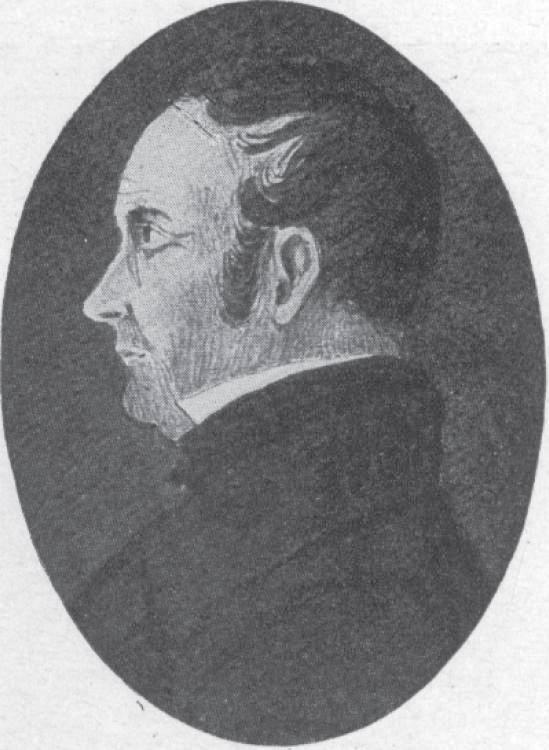 Parley P. Pratt also taught and baptized Joseph Fielding. Joseph Fielding would later become a prominent leader in the Church. His sisters Mercy and Mary also joined the church. Mary Fielding would later marry Hyrum Smith, who together had a son named Joseph Fielding Smith. Joseph Fielding Smith would serve 52 years as a General Authority, including 18 as President of the Church. Joseph Fielding Smith had a son also named Joseph Fielding Smith who also served as President of the Church (Joseph Fielding Smith is now known simply as Joseph F. Smith to distinct him from his son Joseph Fielding Smith).
Parley P. Pratt also taught and baptized Joseph Fielding. Joseph Fielding would later become a prominent leader in the Church. His sisters Mercy and Mary also joined the church. Mary Fielding would later marry Hyrum Smith, who together had a son named Joseph Fielding Smith. Joseph Fielding Smith would serve 52 years as a General Authority, including 18 as President of the Church. Joseph Fielding Smith had a son also named Joseph Fielding Smith who also served as President of the Church (Joseph Fielding Smith is now known simply as Joseph F. Smith to distinct him from his son Joseph Fielding Smith).
Willard Richards
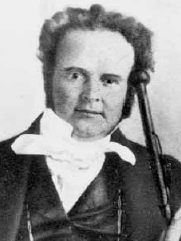 In 1836 Joseph and Brigham Young gave their cousin Willard Richards a copy of the Book of Mormon. Ten days later, Willard had read the book twice and desired to be baptized and gather with the Saints in Kirtland, Ohio. On December 31, 1836, Willard Richards was baptized by Brigham Young. Two months later Willard would be ordained an Elder.
In 1836 Joseph and Brigham Young gave their cousin Willard Richards a copy of the Book of Mormon. Ten days later, Willard had read the book twice and desired to be baptized and gather with the Saints in Kirtland, Ohio. On December 31, 1836, Willard Richards was baptized by Brigham Young. Two months later Willard would be ordained an Elder.
Lorenzo Snow
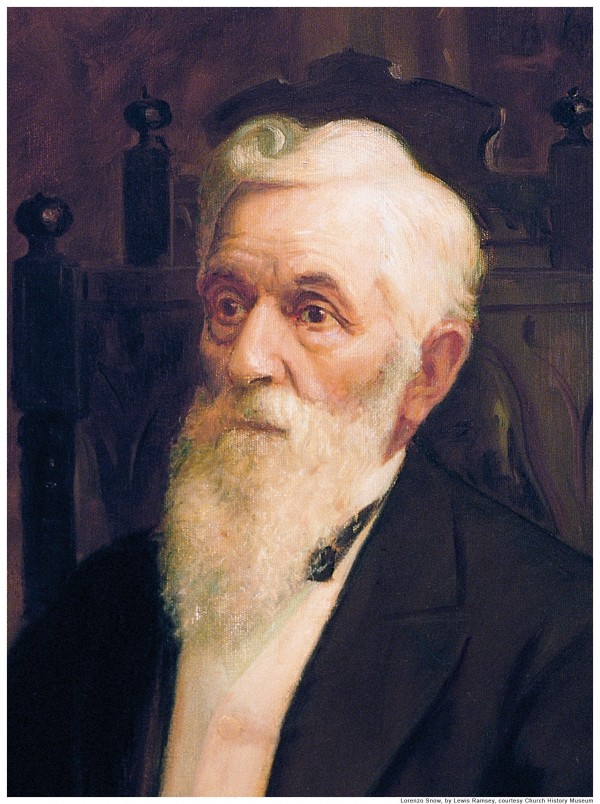 In 1831, Joseph Smith took up residence in Hiram, Ohio, which was four miles from the Snow farm. The Snow family were Baptists, but soon took a strong interest in the new religious movement. Lorenzo Snow would hear the Book of Mormon being read in his home by his mother and sisters. By 1835, Lorenzo’s mother and older sister Eliza R. Snow had joined the Church. Eliza moved with the Saints to Kirtland, Ohio and there worked as a school teacher. While in Kirtland, a school of Hebrew learning was established by the Church. Eliza invited Lorenzo to visit her and attend Hebrew classes. Lorenzo obliged and during his visit there in 1836, was baptized by John F. Boynton, a member of the Quorum of the Twelve Apostles. Eliza R. Snow would later say of Lorenzo that it was her zeal that “fostered his interest in Mormonism”.
In 1831, Joseph Smith took up residence in Hiram, Ohio, which was four miles from the Snow farm. The Snow family were Baptists, but soon took a strong interest in the new religious movement. Lorenzo Snow would hear the Book of Mormon being read in his home by his mother and sisters. By 1835, Lorenzo’s mother and older sister Eliza R. Snow had joined the Church. Eliza moved with the Saints to Kirtland, Ohio and there worked as a school teacher. While in Kirtland, a school of Hebrew learning was established by the Church. Eliza invited Lorenzo to visit her and attend Hebrew classes. Lorenzo obliged and during his visit there in 1836, was baptized by John F. Boynton, a member of the Quorum of the Twelve Apostles. Eliza R. Snow would later say of Lorenzo that it was her zeal that “fostered his interest in Mormonism”.
Wilford Woodruff
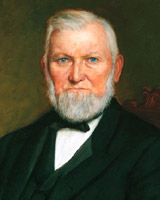 Zera Pulsipher, a new convert and Elder in the Church, was one day plowing his fields when an impression came to him to leave his work and go preach the gospel. The urge was so strong that at about eleven in the morning, he unyoked his oxen from the plow and led them to the pasture and returned home. Then he asked his wife, Mary, for a clean shirt and a pair socks. “Where on earth are you going?” she asked. “I don’t know, only that I am going to preach the gospel. The Lord will show me where to go. I am going where He guides me”, he responded.
Zera Pulsipher, a new convert and Elder in the Church, was one day plowing his fields when an impression came to him to leave his work and go preach the gospel. The urge was so strong that at about eleven in the morning, he unyoked his oxen from the plow and led them to the pasture and returned home. Then he asked his wife, Mary, for a clean shirt and a pair socks. “Where on earth are you going?” she asked. “I don’t know, only that I am going to preach the gospel. The Lord will show me where to go. I am going where He guides me”, he responded.
Immediately after dinner, he left home and headed in the direction in which he felt the Lord wanted him to travel. As he walked from Vermont to Richland, New York (located in northern N.Y.) he met another missionary, Elijah Cheney, and the two united their efforts. When they arrived in Richland they arranged to speak in a school house.
On the other end of the story, Wilford Woodruff was exposed to many different denominations as a youth. From the teachings of an older friend, the whisperings of the spirit, and studying the scriptures he came to the conclusion that they lacked the spiritual gifts and authority that they ought to have. When he told that to the ministers, they said that he was foolish for believing it, and that they “do not need those things”.
Wilford Woodruff would later recall, “In my early manhood I prayed day and night that I might live to see a prophet. I would have gone a thousand miles to have seen a prophet, or a man that could teach me the things that I read of in the Bible. I could not join any church, because I could not find any church at that time that advocated these principles. I spent many a midnight hour, by the river side, in the mountains, and in my mill, calling upon God that I might live to see a prophet or some man that would teach me of the things of the kingdom of God as I read them.”
On December 29, 1833, Wilford Woodruff finally heard the gospel from authorized servants of God as the two stories intertwined. He recounted, “For the first time in my life, I saw an Elder in the Church of Jesus Christ of Latter-day Saints. That was Zera Pulsipher. He told me that he was inspired of the Lord. He was threshing grain in his barn when the voice of the Lord came to him and told him to arise and go to the north, the Lord had business for him there. He called upon Brother [Elijah] Cheney, his neighbor and a member of the Church. They traveled sixty miles on foot in deep snow, and the first place they felt impressed to call upon was the house of my brother and myself. They went into the house and talked with my brother’s wife, and they told her who they were and what their business was. They told her that they were moved upon to go to the north, and they never felt impressed to stop anywhere until they came to that house. When they told her their principles, she said her husband and her brother-in-law both were men who believed those principles, and they had prayed for them for years. They appointed a meeting in the schoolhouse upon our farm. I came home in the evening, and my sister-in-law told me of this meeting. I had been drawing logs from the shores of Lake Ontario (I was in the lumber business), and I turned out my horses, did not stop to eat anything, and went to the meeting. I found the house and the dooryard filled with people. I listened for the first time in my life to a Gospel sermon as taught by the Elders of this Church. It was what I had sought for from my boyhood up.”
President Woodruff recorded his response to the first sermon he heard from Zera Pulsipher: “He commenced the meeting with some introductory remarks and then prayed. I felt the Spirit of God to bear witness that he was the servant of God. He then commenced preaching, and that too as with authority, and when he had finished his discourse I truly felt that it was the first gospel sermon that I had ever heard. I thought it was what I had long been looking for. I could not feel it my duty to leave the house without bearing witness to the truth before the people. I opened my eyes to see, my ears to hear, my heart to understand, and my doors to entertain him who had administered unto us.”
Accordingly, “I invited the men home with me. I borrowed the Book of Mormon, and sat up all that night and read. In the morning I told Brother Pulsipher I wanted to be baptized. I had a testimony for myself that those principles were true. Myself and my brother went forth and were baptized—the two first in that county”
George Q. Cannon
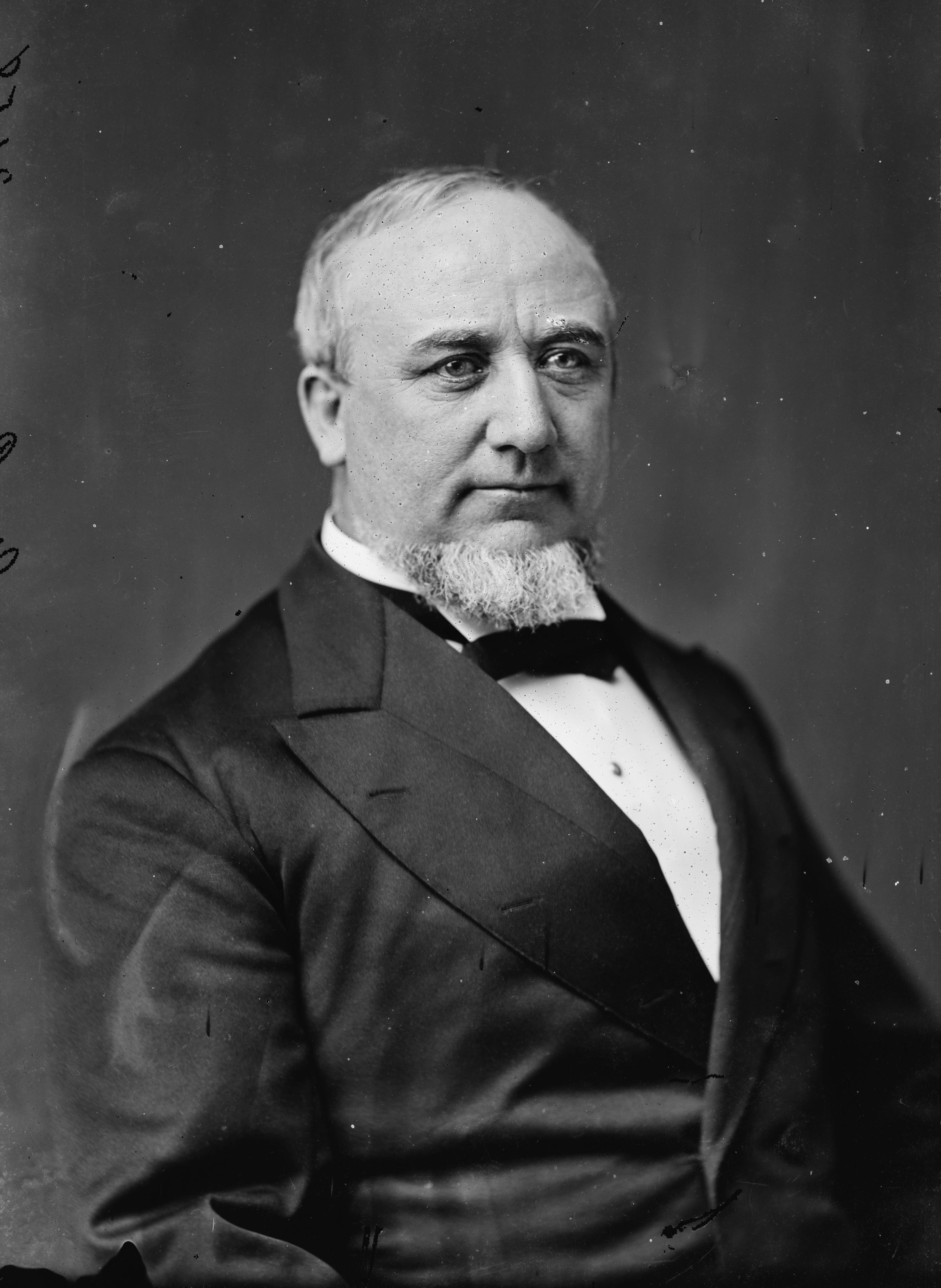 George Q. Cannon was born in 1827 in Liverpool, England and was the eldest child of George Cannon. George, Sr. became aware of the Church when his sister, Leonora Cannon, was baptized with her husband and future President of the Church, John Taylor, in 1836. Four years later, John Taylor, while on a mission in England, taught and baptized the Cannon family when George Q. was thirteen. Two years later, the family left Liverpool and sailed to America.
George Q. Cannon was born in 1827 in Liverpool, England and was the eldest child of George Cannon. George, Sr. became aware of the Church when his sister, Leonora Cannon, was baptized with her husband and future President of the Church, John Taylor, in 1836. Four years later, John Taylor, while on a mission in England, taught and baptized the Cannon family when George Q. was thirteen. Two years later, the family left Liverpool and sailed to America.
Erastus Snow
 While living in Vermont, Erastus first heard about the Church through his brother Zerubbabel Snow. Zerrubbabel was taught by Orson Pratt and Lyman E. Johnson and baptized in 1832. Sometime shortly after Zerrubbabel was baptized, Erastus inquired about the Church. Orson Pratt then taught and baptized Erastus.
While living in Vermont, Erastus first heard about the Church through his brother Zerubbabel Snow. Zerrubbabel was taught by Orson Pratt and Lyman E. Johnson and baptized in 1832. Sometime shortly after Zerrubbabel was baptized, Erastus inquired about the Church. Orson Pratt then taught and baptized Erastus.
David W. Patten
In 1830, while living in Vermont, David W. Patten was in serious contemplation of things of a spiritual nature. Through repentance and desiring to live a life filled with the Holy Spirit, David heard for the first time about the Book of Mormon. He said, “I was greatly agitated in mind about it, and desired to see it. I saw the book that same summer, but had no opportunity of reading it further than the preface and testimony of the witnesses. A fear came upon me, and I dare not say anything against it. From that time I began to cry to God for saving faith.” Two years passed and David received a letter in the mail from his brother John who told him of “the Church of Christ, the reception of the Holy Ghost and the gifts thereof by the Saints. My brother informed me that he had received the Holy Ghost by the laying on of the hands of the Elders of the Church. This caused my heart to leap for joy, and I resolved to go immediately and see for myself.” David traveled nearly 300 miles to visit his brother. On June 15, 1832, David W. Patten was baptized by his brother John.

